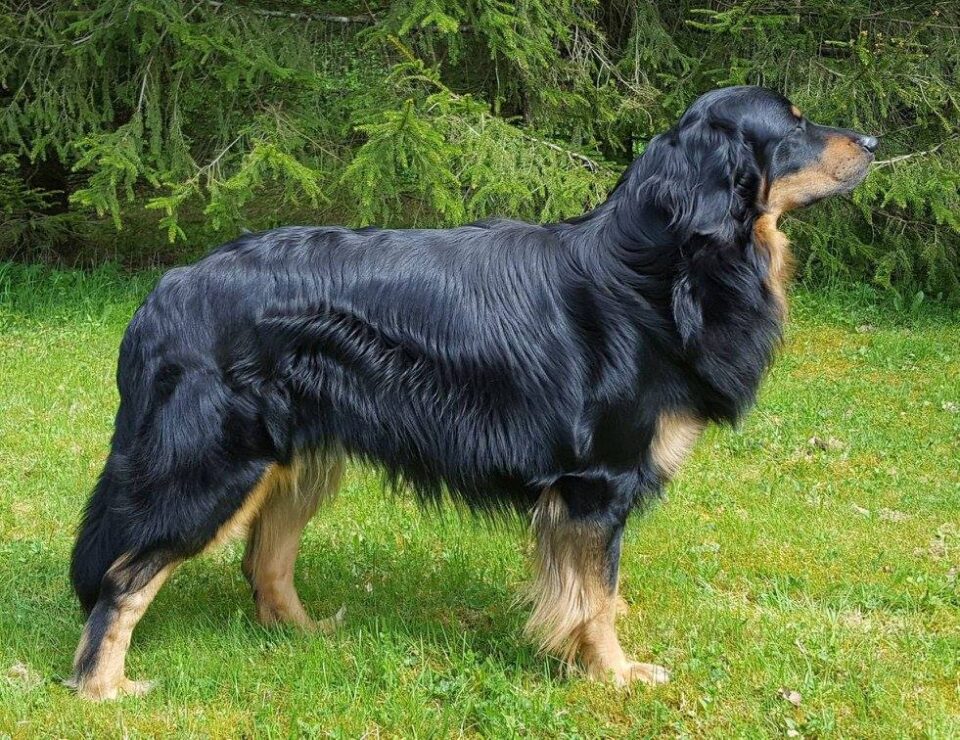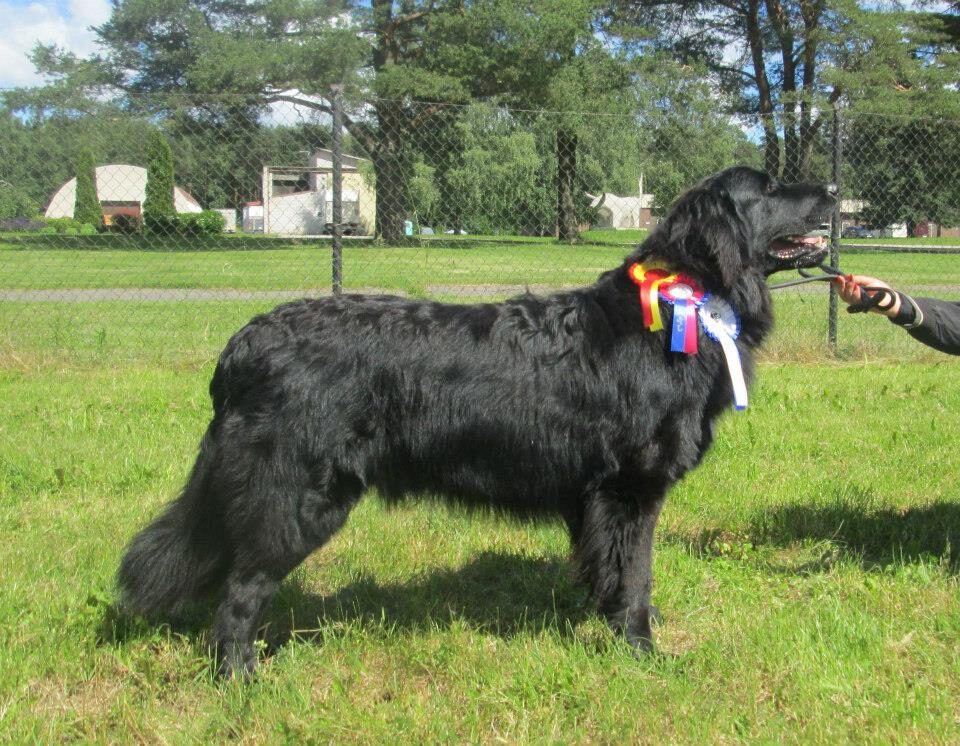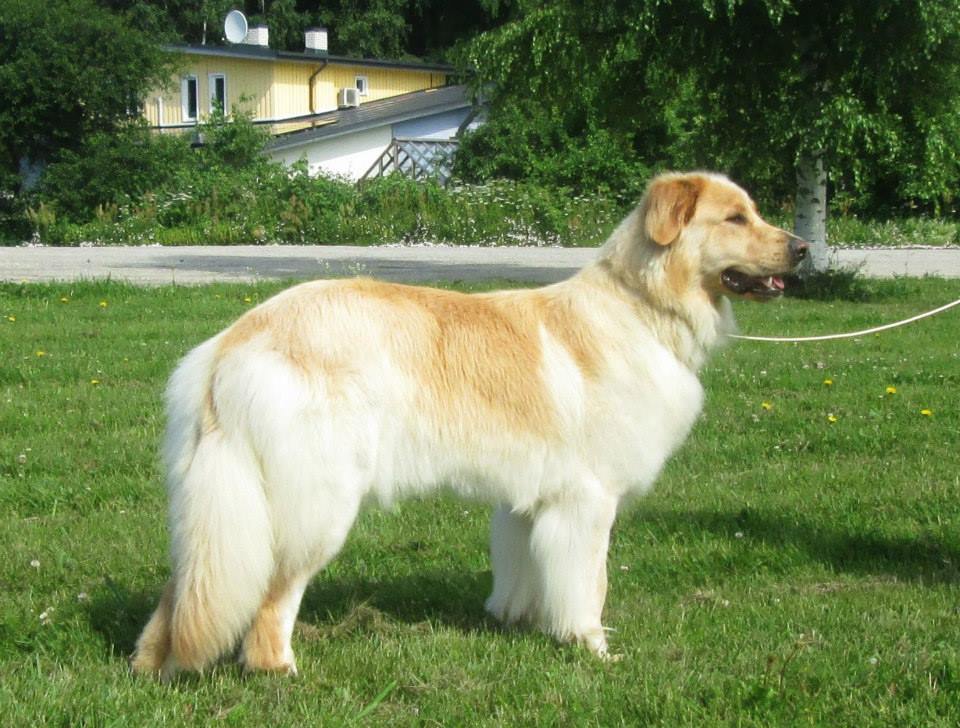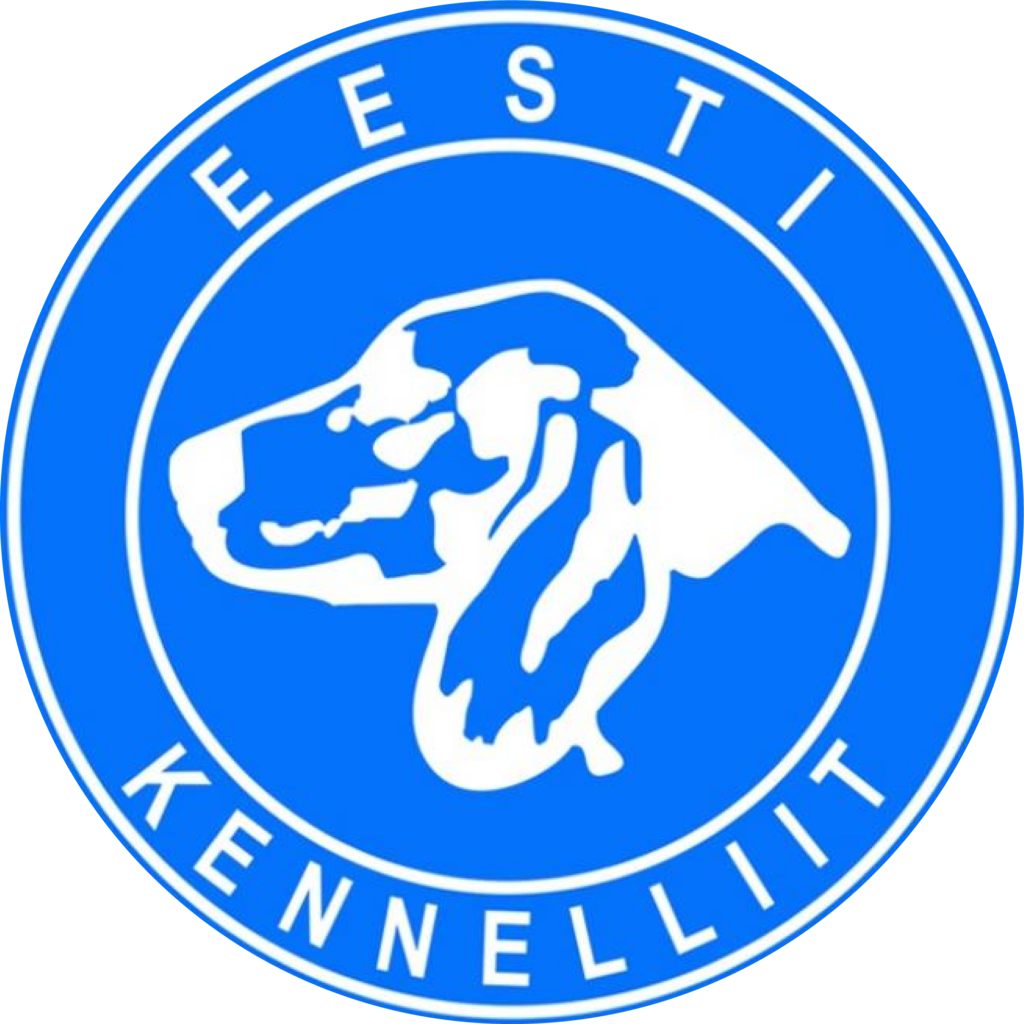| Tunnused | |
|---|---|
| Height at the withers | 63-70 cm (For dogs) 58-65 (For bitches) |
| Coat hair | Predominantly curly coat (ring curls) |
| Coat color |
In general
|
| Notes | IHF |
By page Wikipedia

BLACK AND TAN

BLACK

BLOND
Breed standards
Hovawart is strong, medium-sized service dog with a bit oval body. Height from scruff is 63-70 cm on dogs and 58-65 cm on bitches. Hovawart has a strong head, wide forehead, transition from forehead to snout is clearly noticeable. Strong snout goes thinner from head to nose. Lips are tightly sealed. Teeth are strong and straight.
Character of breed
Number of Hovawarts has been growing in the last few years. Breed’s versatility may be the cause of that. It’s a great watchdog and protector, but also a restless playmate and friend of a family. Hovawart is a big, strong and fast dog with good breed qualities. It needs at least a one-hour walk, plus 3 or 4 shorter walks daily. Hovawart likes running and hiking. It’s an intelligent familydog, who is fond of every family member and shows respect for pets. It suites well for familys with kids, if the kids don’t tease the dog. Hovawart is independent and could get dominant, hence it needs training. It can be used as tracedog, rescue dog, guardian and for defensive purposes. In training and especially obedience work the trainer must keep positive reinforcement in mind all the time, as this breed is not as eager to please as many other working dog-breeds: it always needs some kind of motivation. It is important to realize that the Hovawart works with people and not for people. They do have the ability to think and act independently. Their guarding instinct for example does not require any real training; it is inherent, as it is what they were bred for. The Hovawart may easily become reluctant if training is built only on punishments. It is up to the Hovawart owner to be more alert, intentional, directive, and consistent than his dog. The Hovawart needs a leader it can trust.


